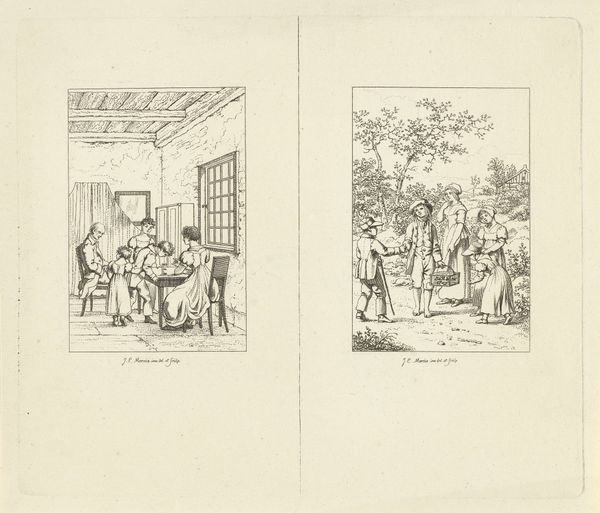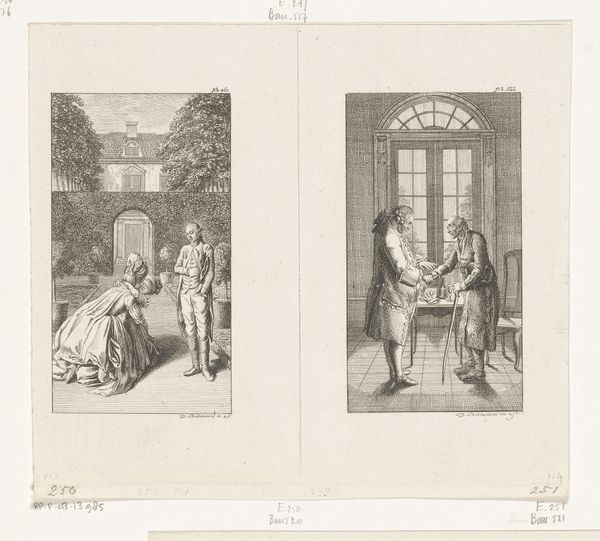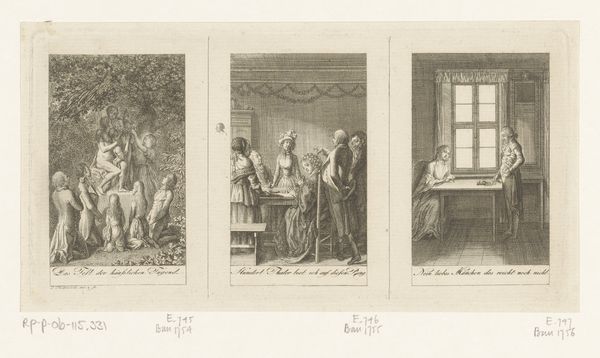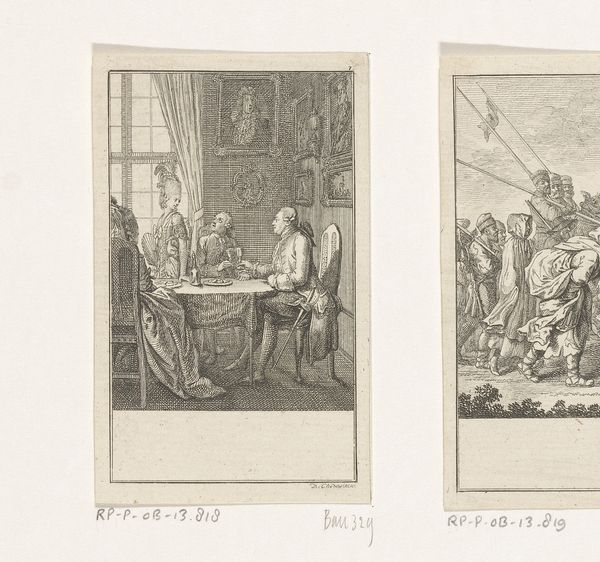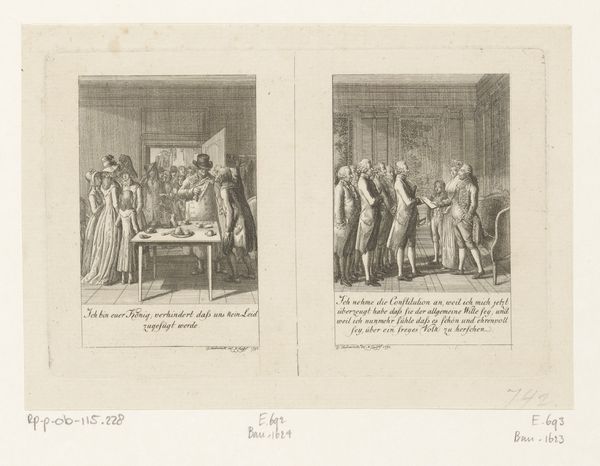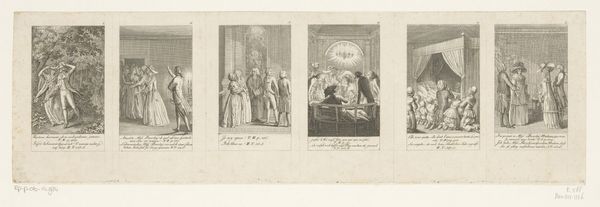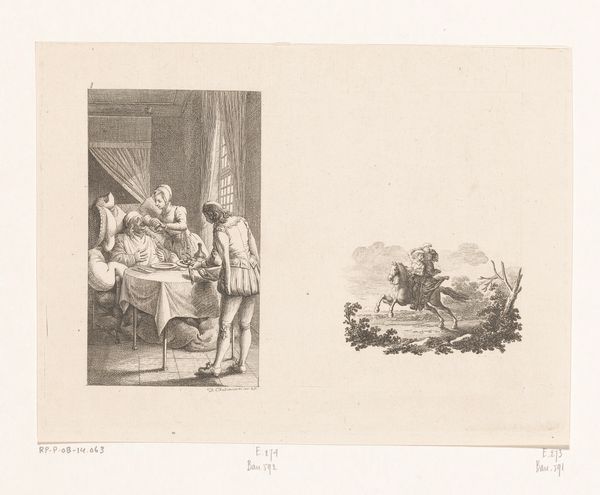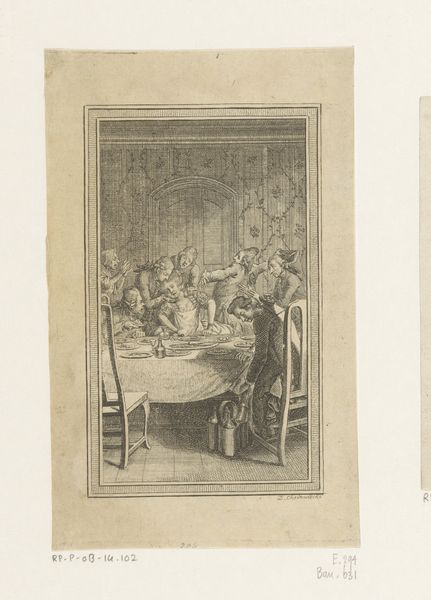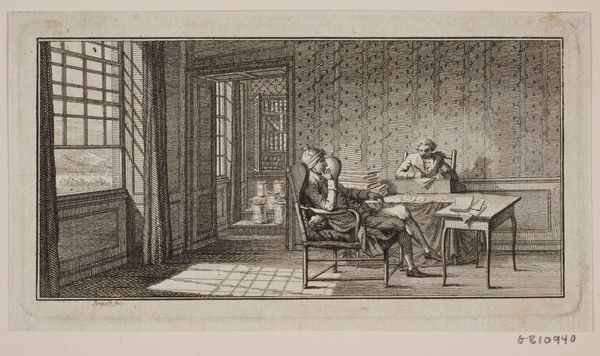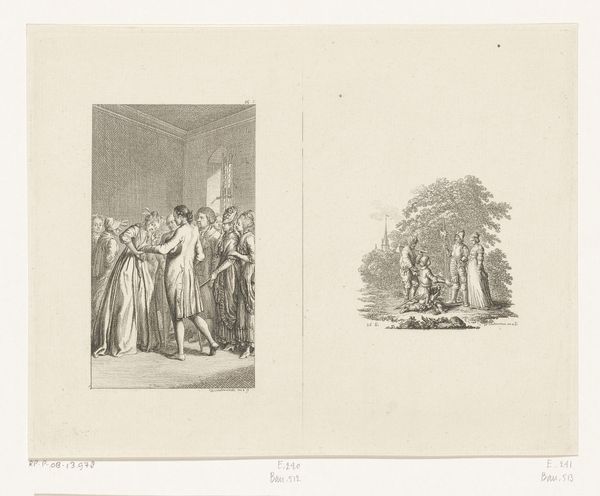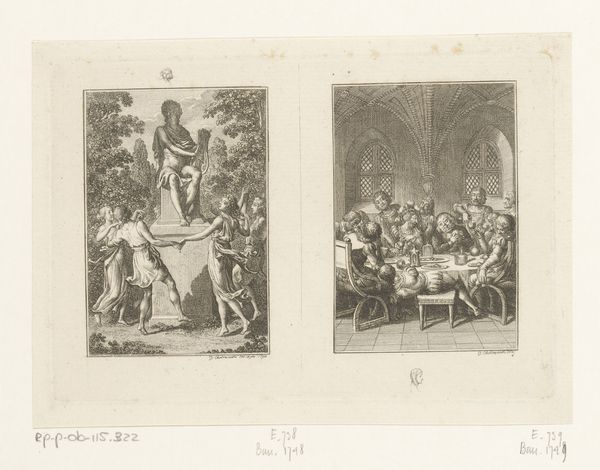
Dimensions: height 164 mm, width 252 mm
Copyright: Rijks Museum: Open Domain
Editor: So, this is "Candide speelt kaart en Candide in Noorwegen," from 1778, by Daniel Nikolaus Chodowiecki. It's a print and etching on paper. It almost looks like two different scenes, divided into distinct panels. There is so much happening here. How would you interpret this narrative artwork? Curator: Well, placing this work in its socio-political context is crucial. Chodowiecki lived during a time of significant upheaval, just before the French Revolution. Narrative art served a vital public role, often conveying moral or social commentary. Note how the two panels contrast – one depicts an interior scene of opulent card-playing, and the other, an outdoor scene of what seems to be poverty in Norway. Does that contrast spark any ideas for you? Editor: It does make me think about class disparities and social inequalities. It looks like there is definitely tension there! Curator: Exactly. The composition and stark contrasts likely intend to critique the aristocracy's frivolous activities versus the struggles of the common people. Etchings and prints also allowed for broader dissemination of such social commentaries to the wider public than painting at the time. Can you imagine the impact of these scenes on an audience steeped in Enlightenment ideals? Editor: That's fascinating. I hadn’t really thought about the role of the print medium itself. Seeing it that way really does emphasize the artwork as a form of social critique, something meant to be shared and debated. Curator: Precisely! These images were not simply aesthetic objects; they actively participated in the political and social dialogues of their time. How do you think museums showing work like this impact us today? Editor: I think it is so important to show the socio-political issues through artwork because it influences perspective and change! I definitely will be considering the original setting of an artwork going forward to broaden my interpretation! Curator: Glad to hear. By considering the historical and cultural environment in which they were created, it gives us much more than looking only at aesthetics.
Comments
No comments
Be the first to comment and join the conversation on the ultimate creative platform.

